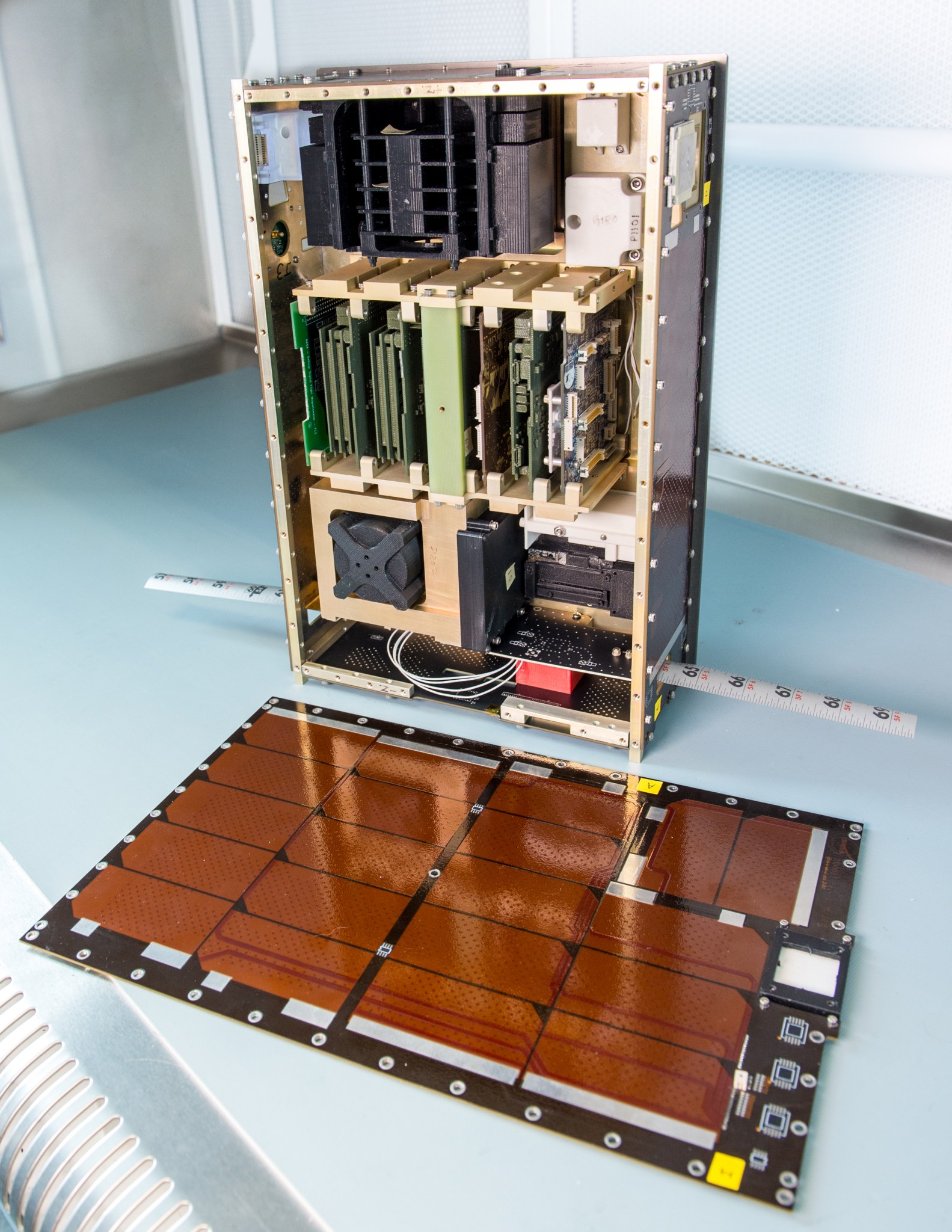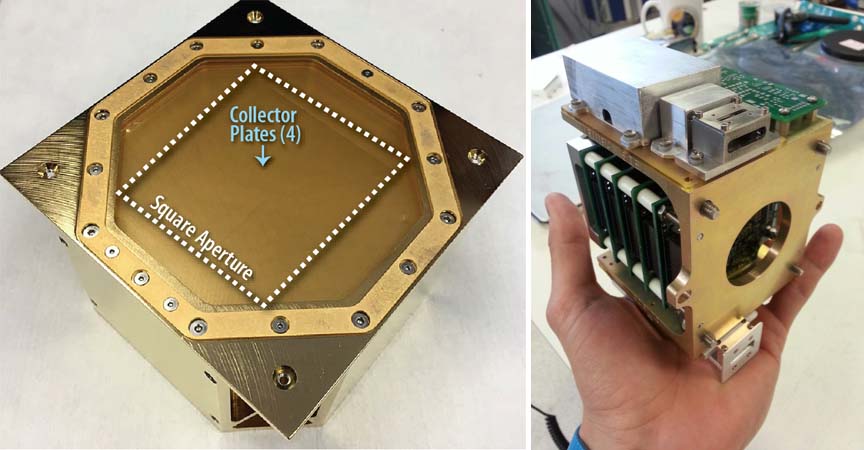Figuring out how plasma bubbles and blobs affect one another and ultimately the transmission of communications, GPS, and radar signals in Earth’s ionosphere will be the job of a recently selected CubeSat mission.
A team of NASA scientists and engineers, led by Jeffrey Klenzing and Sarah Jones, scientists at NASA’s Goddard Space Flight Center in Greenbelt, Maryland, recently won NASA funding to build the Plasma Enhancements in The Ionosphere-Thermosphere Satellite. The mission, also known as petitSat, is a precursor to a possible Explorer-class mission and leverages several R&D-supported technologies, including the satellite bus itself.
When it launches from the International Space Station in 2021, the mission will study density irregularities in the mid and low-latitude ionosphere, which occupies a tiny fraction of the atmosphere and is basically an ionized layer coexisting with the thermosphere roughly 50 to 250 miles above Earth’s surface.
The ionosphere is a plasma, an ionized gas consisting of positive ions and free electrons. It is important to long-distance radio communication because it reflects radio waves back to Earth. Consequently, any perturbations in the density of the plasma interfere with GPS and radar signals.
These perturbations or irregularities come in the form of ionospheric depletions or bubbles, structures that contain fewer electrons, and enhancements or blobs that contain a greater number of electrons. “All these irregularities can distort the transmission of radio waves,” said Klenzing, the mission principal investigator.
Blobs and Bubbles: A Different Story
Previous studies of the blobs indicate that they can be the direct result of bubbles forming near the geomagnetic equator, Klenzing said. Other observations, however, tell a different story. The blobs can be observed in regions where bubbles do not extend and can form when bubbles do not.
They suggest that multiple mechanisms are at play, including fast-traveling waves coming from the thermosphere, a warm neutral atmospheric layer where most of the ionosphere resides. In fact, these wave-like thermospheric structures create waves in the ionosphere through ion-neutral drag — a phenomenon called Medium-Scale Traveling Ionospheric Disturbances, or MSTIDs. The resulting MSTIDs create electric fields that can transport energy from the summer hemisphere to the winter hemisphere. It is thought that the observed plasma blobs are the consequence of these electric fields.
“Our mission will investigate the link between these two phenomena — enhanced plasma density measurements, or blobs, and the wave action in the thermosphere,” Klenzing said.
To find out, the team will fly two instruments: a version of the Goddard-developed Ion-Neutral Mass Spectrometer, or INMS — the world’s smallest mass spectrometer that has flown on ExoCube, a CubeSat mission sponsored by the National Science Foundation — and the Gridded Retarding Ion Drift Sensor, or GRIDS, provided by Utah State University and Virginia Tech.
The mass spectrometer will measure the densities of a variety of particles in the upper reaches of Earth’s atmosphere, observing how these densities change in response to daily and seasonal cycles. The university-provided instrument, meanwhile, will measure the distribution, motion, and velocity of ions.
Dellingr-Based Mission
The team will integrate its instruments on a Dellingr-based spacecraft. A team of Goddard engineers specifically created this 6U CubeSat to demonstrate that that these tiny craft could be reliable and cost-effective also while delivering compelling science. Dellingr, which also carries the INMS, magnetometers, and other technologies, is expected to launch in August.
Unlike Dellingr whose solar panels are mounted on the side of the spacecraft, petitSat will fly deployable solar arrays — an enhancement that will allow mission operators to more easily point the arrays to the sun to recharge batteries. It also will carry a more advanced star tracker, said Jones, the INMS principal investigator.
When petitSat is deployed 249 miles above Earth — consistent with the International Space Station’s orbit — the resulting data will be compared with that gathered by other ground- and space-based assets, Klenzing said. “Through comparative analysis, we will bring closure to our key science question: what is the link between plasma enhancements and MSTIDs. We’ve studied bits and pieces, but we’ve never had a full complement of instruments.”
For more technology news, go to https://gsfctechnology.gsfc.nasa.gov/newsletter/Current.pdf




























